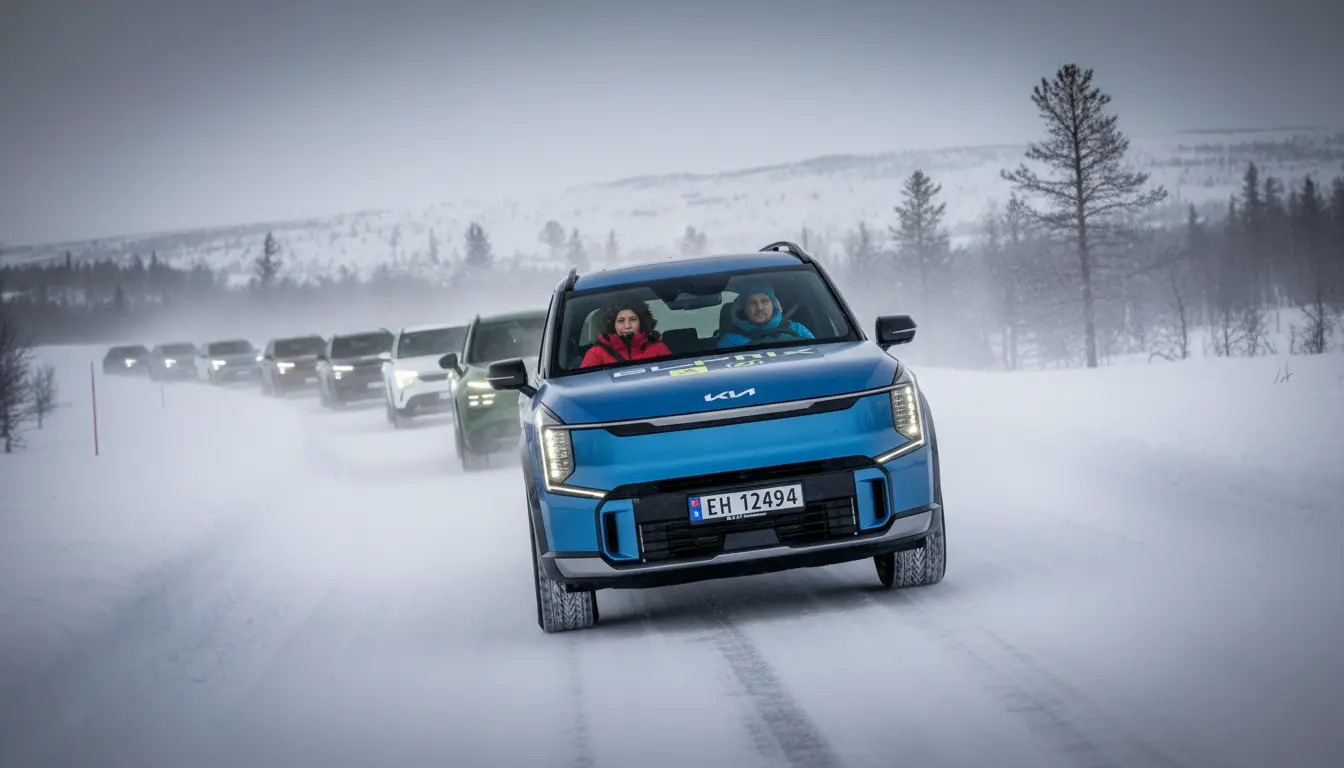Norway’s Record: 98.3% EVs, and It’s No Accident
September 2025 broke new ground in Norway: 98.3% of all new passenger car registrations were 100% electric. This wasn’t just a one-off peak — the percentage for the first nine months of the year settled at 95%, setting another all-time high. The Norwegian Public Roads Administration (OFV) now confirms that Norway has practically reached its ambitious political goal: all new cars sold should be zero emission by 2025.
So, how did an Arctic country, famous for subzero temperatures that make even batteries shiver, pull off a clean sweep of its new car market with EVs? Well, as it turns out, it’s not down to dumb luck or collective Scandinavian stubbornness. It’s a unique blend of smart policy moves and focused investment.
Sticks, Carrots, and a Tight Tax Policy: What Drove the Shift
Norway has long made combustion engine cars a costly indulgence, slapping them with heavy import taxes that jack up the sticker price. In contrast, electric vehicles have been entirely exempt from these charges. And up until 2022, these EVs walked right past the 25% value-added tax (VAT) that usually applies. Since 2023, only EVs priced under €42,600 (about $46,000) enjoy that full VAT exemption.
Plus, policies specifically encourage companies and leasing firms to opt for electric vehicles, making the transition a collective affair, not just a private pursuit.
Other incentives have sweetened the deal for Norwegian drivers: for a time, EVs got free passage through tolls, discounted fares on ferries, cut-price parking, and even the right to cruise down bus lanes in cities. As the electric fleet boomed, these perks have been gradually phased out — after all, you can’t clog up the bus lanes with too many cars, no matter how green.
Cecilie Knibe Kroglund, State Secretary at the Ministry of Transport, summed up the policy as follows: “a stick for fossil vehicles and a carrot for electric vehicles.”
On top of the tax breaks and tangible benefits, there’s an unexpected twist: Norway doesn’t have any homegrown carmakers, so the government doesn’t have to shield local industry or play tug-of-war with manufacturing risks.
The Real-World Infrastructure: Charging Ahead in the Cold
But there’s more. Even with tough winters and sometimes epic distances between cities, Norway has rolled out a dense, efficient network of charging stations. This investment tackled the number-one anxiety urban and rural drivers alike have — range, especially when temperatures plummet.
Having spent time test-driving there, one striking thing was clear: drivers tend to charge only enough for their immediate journey, rather than topping up to full every time. The upshot? High turnover at charging stations and very low waiting times, even during peak travel.
Most cars on sale in Norway now include thermal management systems — basically, they can preheat their batteries before charging, trimming range losses even when it’s cold enough to make your breath freeze mid-sentence.
The Norwegian Automobile Federation (NAF) puts EVs through their paces with real-world range tests, including full-on winter trials. The results? Let’s just say the differences between lab-rated (WLTP) and real-life range figures are exposed for all to see. Not only do these results grab international attention, but they also build credibility for automakers’ strategies — leading some manufacturers to run their own range tests on Norwegian turf to fine-tune battery performance.
Setting the Nordic Benchmark—But Not Without Some Perspective
All in all, this uniquely Scandinavian mix of policies and infrastructure is paying hefty dividends. There’s even a surge in the number of newly registered vehicles, up more than 10% compared to September last year. In the past nine months alone, Norway has registered 113,325 new cars — a 23.5% increase from 2024.
Tesla is very much the big fish in this fjord, claiming nearly a third of September sales, led by the Model Y, which topped the national sales chart yet again (4,132 units sold that month). For comparison, in many countries this figure is almost three times lower than the number of Model Ys registered since January, simply because the scale of our territory doesn’t match Norway’s compact market — so exact replication isn’t quite on the cards for all of us.
As for me? I’m not so much a pilot as a beach bar regular, fueled by equal parts motor news and two-stroke oil, sharing day-to-day wheel-related passions. Into tech and anything with wheels, I always look forward — without erasing the past.

John is a curious mind who loves to write about diverse topics. Passionate about sharing his thoughts and perspectives, he enjoys sparking conversations and encouraging discovery. For him, every subject is an invitation to discuss and learn.





